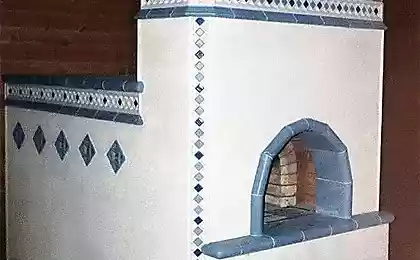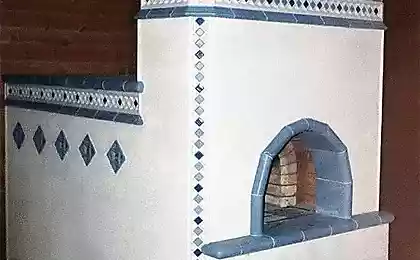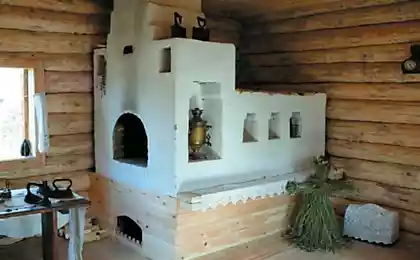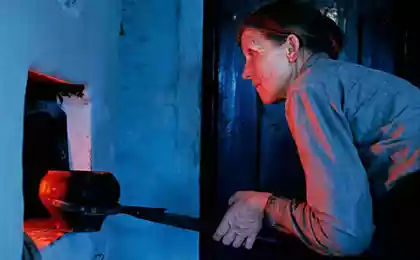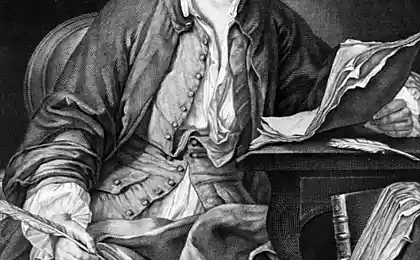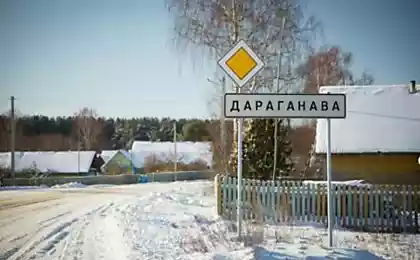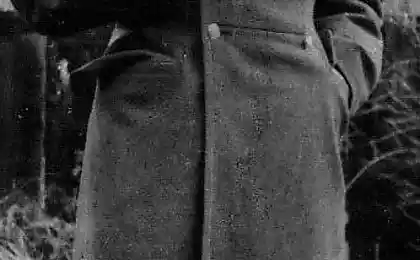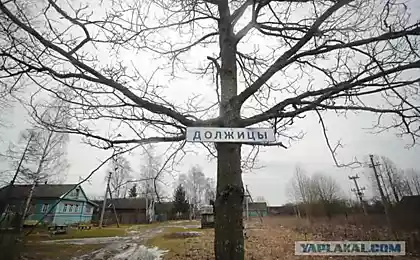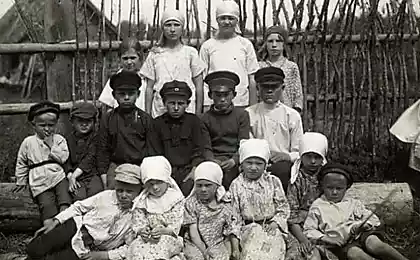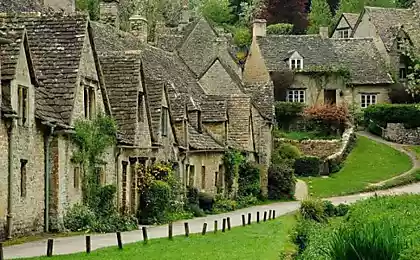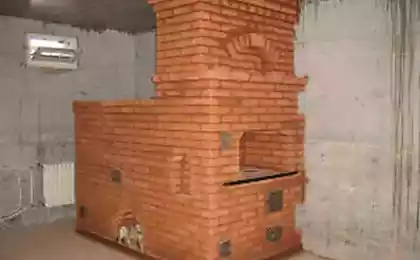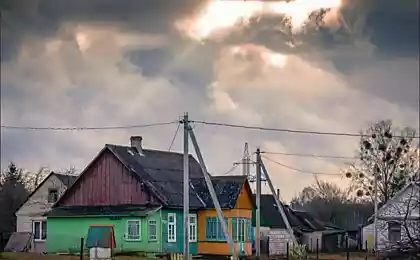771
Life in the Russian village of the tenth century
Let's see how hard life was for our ancestors in the Russian village of the 10th century. Quite an interesting post which I advise you to read.
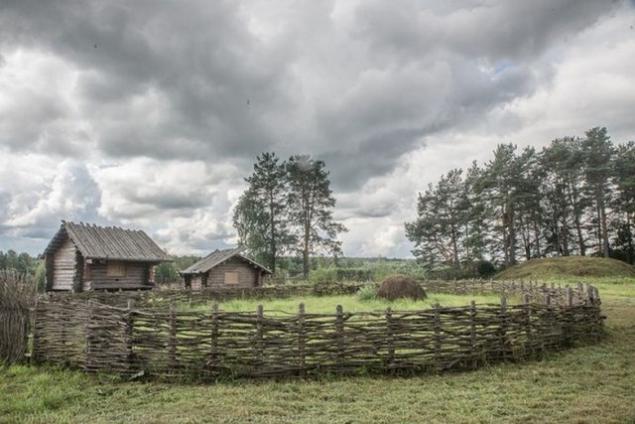
The historical-cultural complex "Lyubytino" we were under the rally dedicated to the 20th anniversary of the group of companies "Autoworld". It is not for nothing is called "One-storey Russia" - to see how our ancestors lived, was very interesting and informative.
In Lyubytino on the place of residence of the ancient Slavs, including burial mounds and real village recreated 10th century, with all the outbuildings and the necessary utensils.
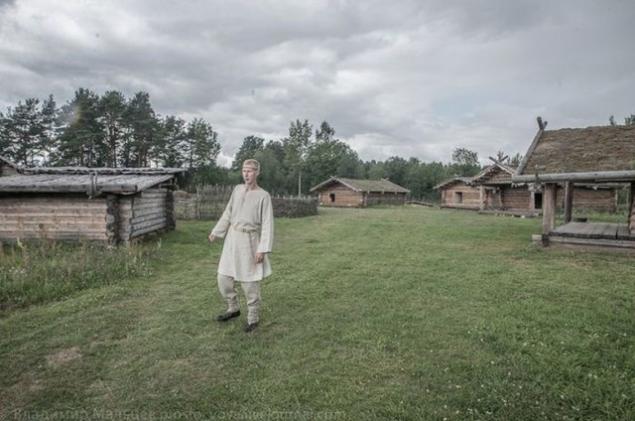
We'll start with the usual Slavic hut. Cabin rubles of logs and covered with birch bark and turf. In some regions, such as the roof huts were covering with straw and wood chips somewhere. Surprisingly, the service life of such a roof is only slightly less than the life of the entire house, 25-30 years, and the house has served 40 years of life in view of the time while at home just for human life and missing.
By the way, in front of the house covered platform - these are the songs about the passage of "a new canopy, maple."
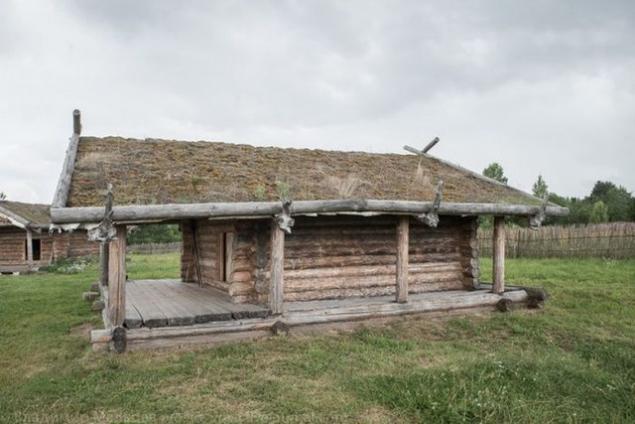
Fired hut on black, that is, the furnace chimney does not have smoke coming out through small window under the roof and through the door. Normal windows either, and the door height is only about one meter. This is done in order not to let the heat out of the house.
When the furnace furnace soot settles on the walls and roof. The furnace "on the black" is a big plus - in such a house is not rodents and insects.
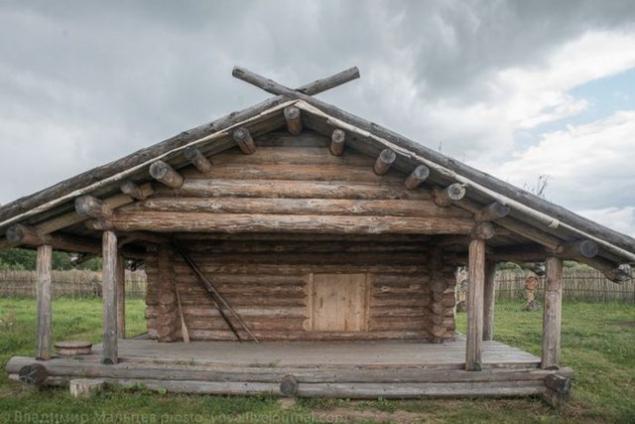
Of course, the house is on the ground without any foundation, the lower crowns just rely on a few large stones.
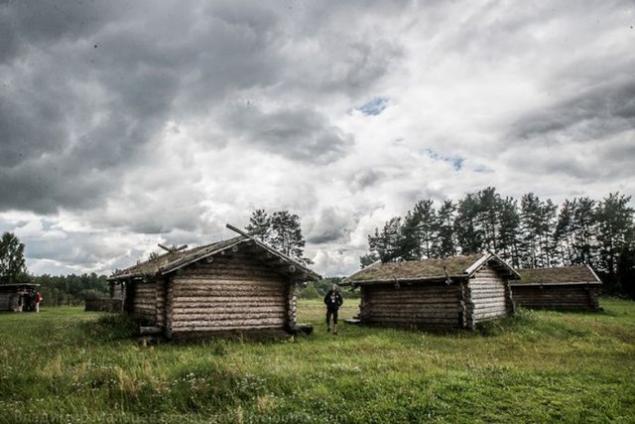
That's made the roof
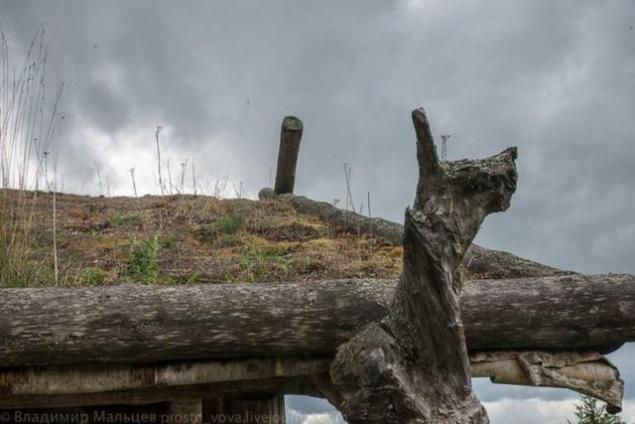
And here is the oven. Mounted on a pedestal of logs covered with clay stone hearth. Stoked the stove from the early morning. When the oven is heated, it is impossible to be in the house, there was only a housekeeper, cook, the rest went to the street to do business, in any weather. After oven heat their stones gave heat until the next morning. The oven and cooked food.
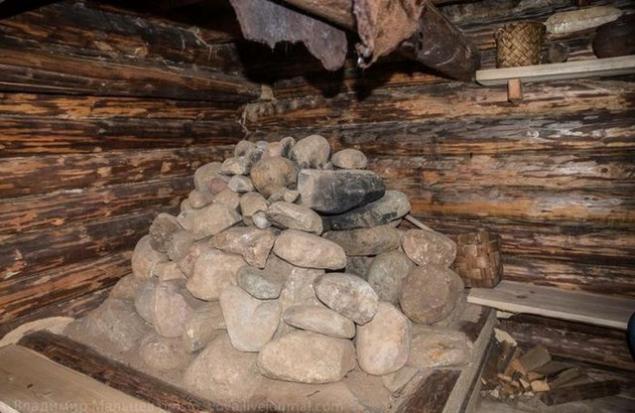
Here is the inside of the hut. We slept on the benches, arranged along the walls, as they were during the meal. The children slept in the loft, in this photo can not see them, they are on top, over his head. In winter, the hut took young livestock, so he did not die from the cold. The hut is also washed. Can you imagine what the air was there, as it was warm and comfortable. Immediately it becomes clear why the life expectancy was so low.
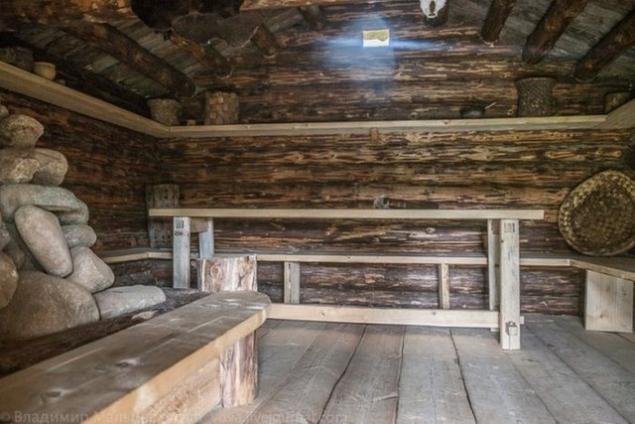
In order not to heat the house in the summer when there is no need, in the village was a separate small building - bread oven. They baked bread and prepared.
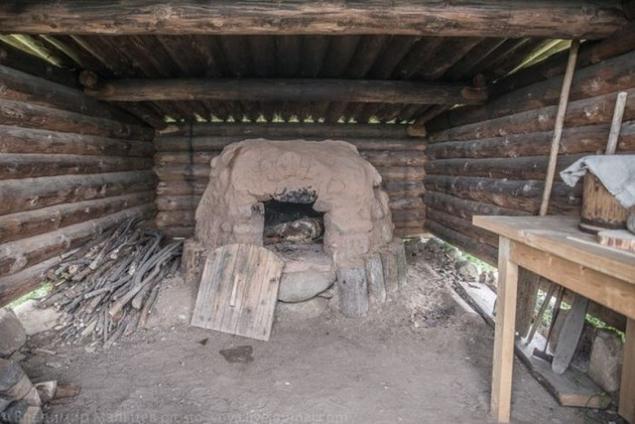
Grain was stored in the barn - building, raised on poles above the ground to protect food from rodents.
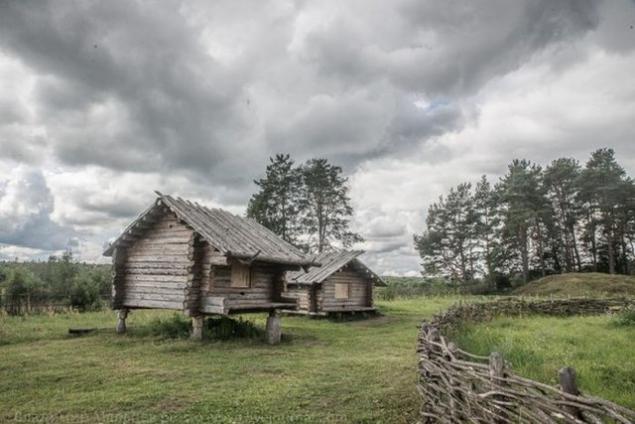
The barn was constructed susekam, remember - "scratched on the bottom of the barrel ..."? This is a special wooden crate in which grains fell asleep on top, and took him from below. Since grain is not stale.
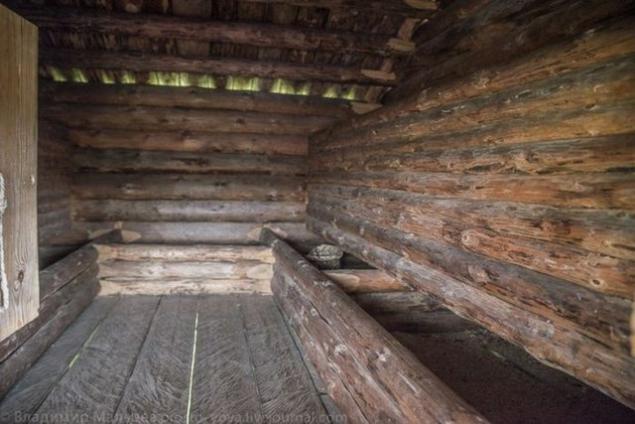
Also in the village it was tripled glacier - the cellar, which was laid in the spring ice, pour hay and lay there almost until the next winter.
Clothing, skin, no need at the moment utensils and weapons were stored in crates. Also, the cage was used when the husband and wife had to retire.
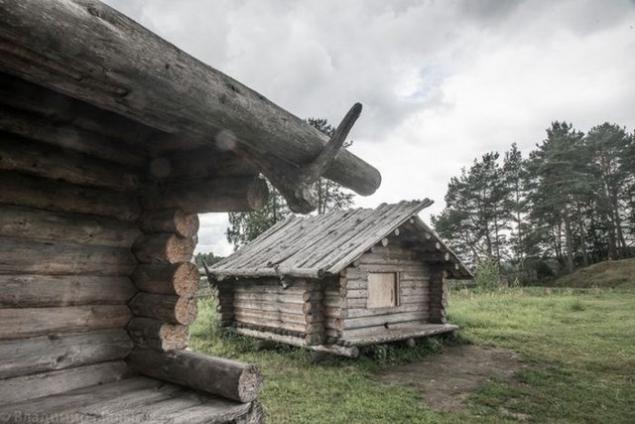
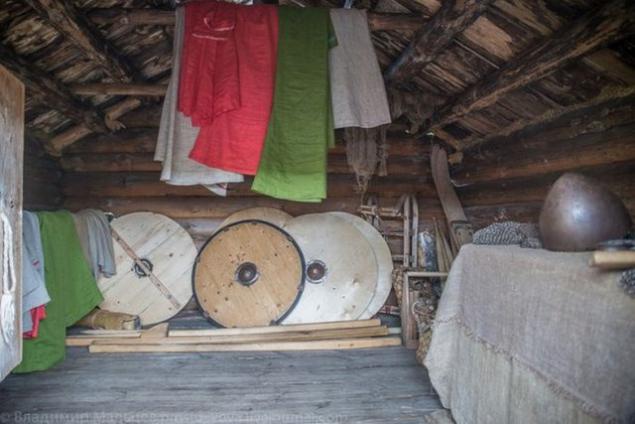
Barn - this building was used for drying sheaves and threshing grain. The heated stones were formed in the center, on poles stacked bundles of dried and farmer, constantly turning. Then threshed grain and veyalis.
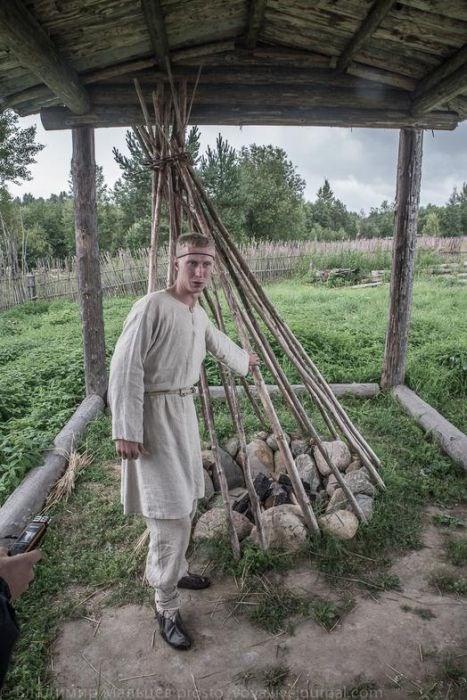
Cooking in the oven requires a special temperature regime - longing. For example, preparing gray soup. Grey they are called because of its gray color. How to cook?
To begin with green cabbage leaves are taken, those that were not included in the head, finely whipped, add some salt and placed under the yoke of the week, for fermentation.
More ing need pearl barley, meat, onions, carrots. The ingredients are placed in a pot, and put it in the oven, where he will hold for several hours. By evening, very thick and hearty dish will be ready.
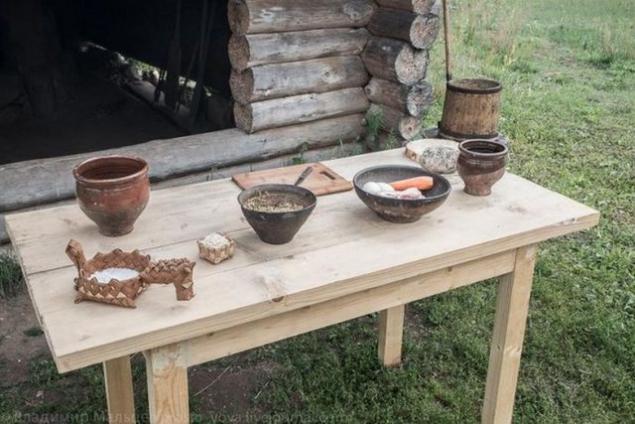
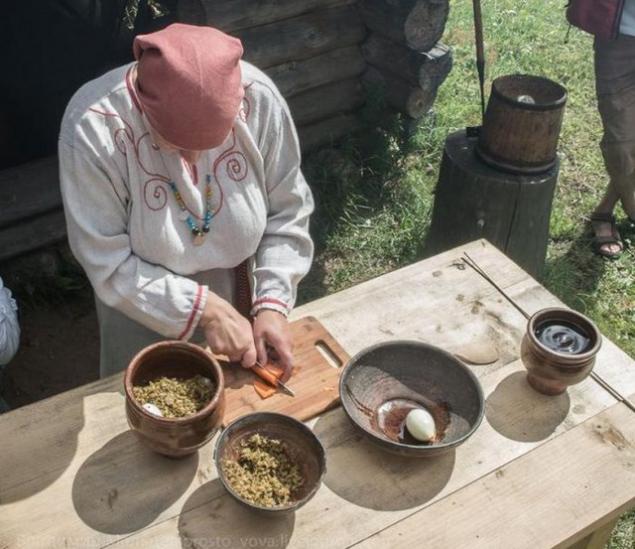
That's how our ancestors lived. Life was not easy. Crop failures often happens, more often - Tatar raids, the Vikings simply bandits. The main type of export were furs, honey, skins. Peasants gather mushrooms and berries, various herbs, fished.
In the defense of the enemy warrior was the basis gear chain mail, shield, helmet. Of weapons - a spear, ax, sword. Mail does not say easy, but unlike Latin, it can be run.
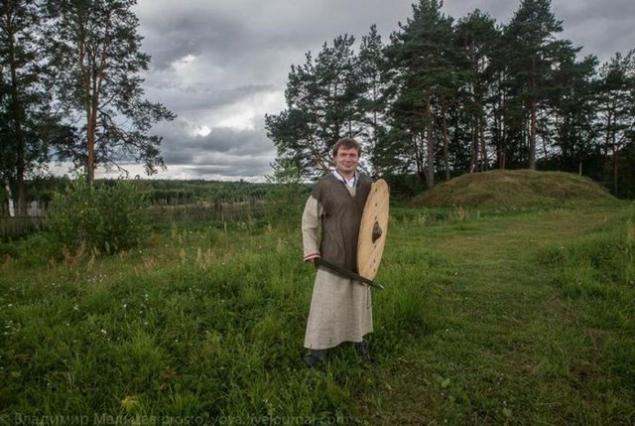
In the defense of the enemy warrior was the basis gear chain mail, shield, helmet. Of weapons - a spear, ax, sword. Mail does not say easy, but unlike Latin, it can be run.
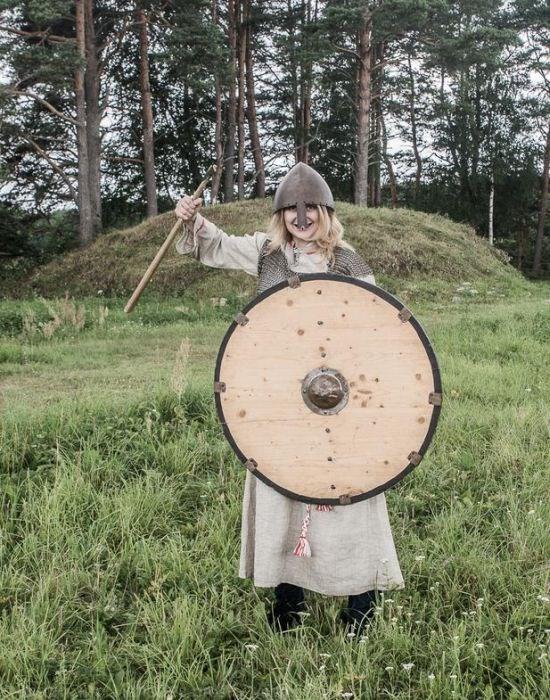
From

The historical-cultural complex "Lyubytino" we were under the rally dedicated to the 20th anniversary of the group of companies "Autoworld". It is not for nothing is called "One-storey Russia" - to see how our ancestors lived, was very interesting and informative.
In Lyubytino on the place of residence of the ancient Slavs, including burial mounds and real village recreated 10th century, with all the outbuildings and the necessary utensils.

We'll start with the usual Slavic hut. Cabin rubles of logs and covered with birch bark and turf. In some regions, such as the roof huts were covering with straw and wood chips somewhere. Surprisingly, the service life of such a roof is only slightly less than the life of the entire house, 25-30 years, and the house has served 40 years of life in view of the time while at home just for human life and missing.
By the way, in front of the house covered platform - these are the songs about the passage of "a new canopy, maple."

Fired hut on black, that is, the furnace chimney does not have smoke coming out through small window under the roof and through the door. Normal windows either, and the door height is only about one meter. This is done in order not to let the heat out of the house.
When the furnace furnace soot settles on the walls and roof. The furnace "on the black" is a big plus - in such a house is not rodents and insects.

Of course, the house is on the ground without any foundation, the lower crowns just rely on a few large stones.

That's made the roof

And here is the oven. Mounted on a pedestal of logs covered with clay stone hearth. Stoked the stove from the early morning. When the oven is heated, it is impossible to be in the house, there was only a housekeeper, cook, the rest went to the street to do business, in any weather. After oven heat their stones gave heat until the next morning. The oven and cooked food.

Here is the inside of the hut. We slept on the benches, arranged along the walls, as they were during the meal. The children slept in the loft, in this photo can not see them, they are on top, over his head. In winter, the hut took young livestock, so he did not die from the cold. The hut is also washed. Can you imagine what the air was there, as it was warm and comfortable. Immediately it becomes clear why the life expectancy was so low.

In order not to heat the house in the summer when there is no need, in the village was a separate small building - bread oven. They baked bread and prepared.

Grain was stored in the barn - building, raised on poles above the ground to protect food from rodents.

The barn was constructed susekam, remember - "scratched on the bottom of the barrel ..."? This is a special wooden crate in which grains fell asleep on top, and took him from below. Since grain is not stale.

Also in the village it was tripled glacier - the cellar, which was laid in the spring ice, pour hay and lay there almost until the next winter.
Clothing, skin, no need at the moment utensils and weapons were stored in crates. Also, the cage was used when the husband and wife had to retire.


Barn - this building was used for drying sheaves and threshing grain. The heated stones were formed in the center, on poles stacked bundles of dried and farmer, constantly turning. Then threshed grain and veyalis.

Cooking in the oven requires a special temperature regime - longing. For example, preparing gray soup. Grey they are called because of its gray color. How to cook?
To begin with green cabbage leaves are taken, those that were not included in the head, finely whipped, add some salt and placed under the yoke of the week, for fermentation.
More ing need pearl barley, meat, onions, carrots. The ingredients are placed in a pot, and put it in the oven, where he will hold for several hours. By evening, very thick and hearty dish will be ready.


That's how our ancestors lived. Life was not easy. Crop failures often happens, more often - Tatar raids, the Vikings simply bandits. The main type of export were furs, honey, skins. Peasants gather mushrooms and berries, various herbs, fished.
In the defense of the enemy warrior was the basis gear chain mail, shield, helmet. Of weapons - a spear, ax, sword. Mail does not say easy, but unlike Latin, it can be run.

In the defense of the enemy warrior was the basis gear chain mail, shield, helmet. Of weapons - a spear, ax, sword. Mail does not say easy, but unlike Latin, it can be run.

From


